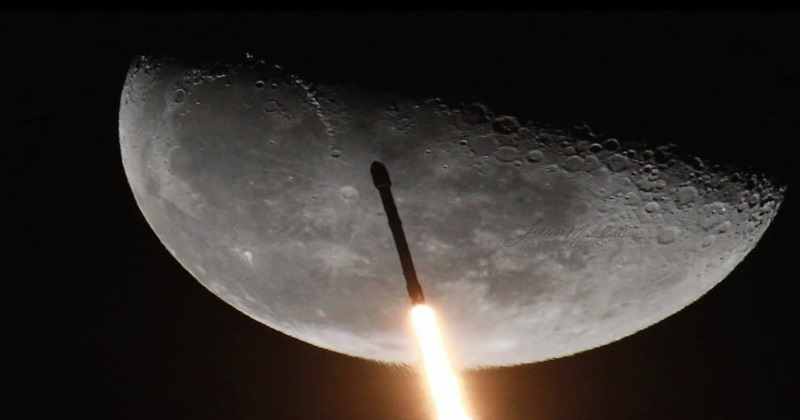
A SpaceX rocket that has been circling the Earth for seven years is set to crash into the moon on March 4. According to space scientists, the upper portion of the errant Falcon 9 rocket separated from the rocket in 2015 and is currently on a collision path with the moon.
Bill Gray, data analyst, writer, and software inventor who tracks near-Earth objects, asteroids, minor planets, and comets wrote in his blog post that as per the latest updates, the rocket’s hunk made a close lunar flyby on January 5.
The section of the rocket weighs over 4 metric tonnes and is expected to leave a noticeable crater on the moon. The impact should happen a few days following the New Moon. The rocket is part of SpaceX’s interplanetary mission, which began in February 2015 with the launch of a weather satellite on a million-mile voyage from Cape Canaveral, Florida.
After putting the NOAA’s Deep Space Climate Observatory on its assigned course to the Lagrange point (locations where the gravitational pulls of two enormous objects, such as the Sun and Earth, are in balance), the Falcon 9 rocket concluded its extended engine run. The rocket, however, became derelict in the second stage due to a lack of fuel to return to the atmosphere of Earth.
Also Read: Robot performs first laparoscopic surgery on pigs without human help
The 4 metric tonne rocket component is travelling at 2.58 kilometres per hour and will collide with the moon in a couple of weeks. Experts say the Falcon 9 is now space debris and the first unintentional instance to crash onto the moon.
Meanwhile, Gray is certain of an impact on March 4. Due to the reflection of sunlight, the actual location of the rocket is now unknown, resulting in ambiguity in estimating rotation times. Gray stated that further observations will be required to get finer specifics regarding the possible effect site. ‘These unpredictable effects are very small but they will accumulate between now and March 4. But, sadly, for space lovers and stargazers, the collision will go unobserved from Earth as the bulk of the moon will be in the way’, Gray wrote in his blog post.

Post Your Comments